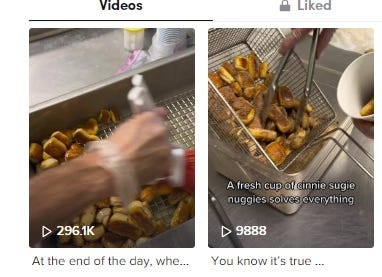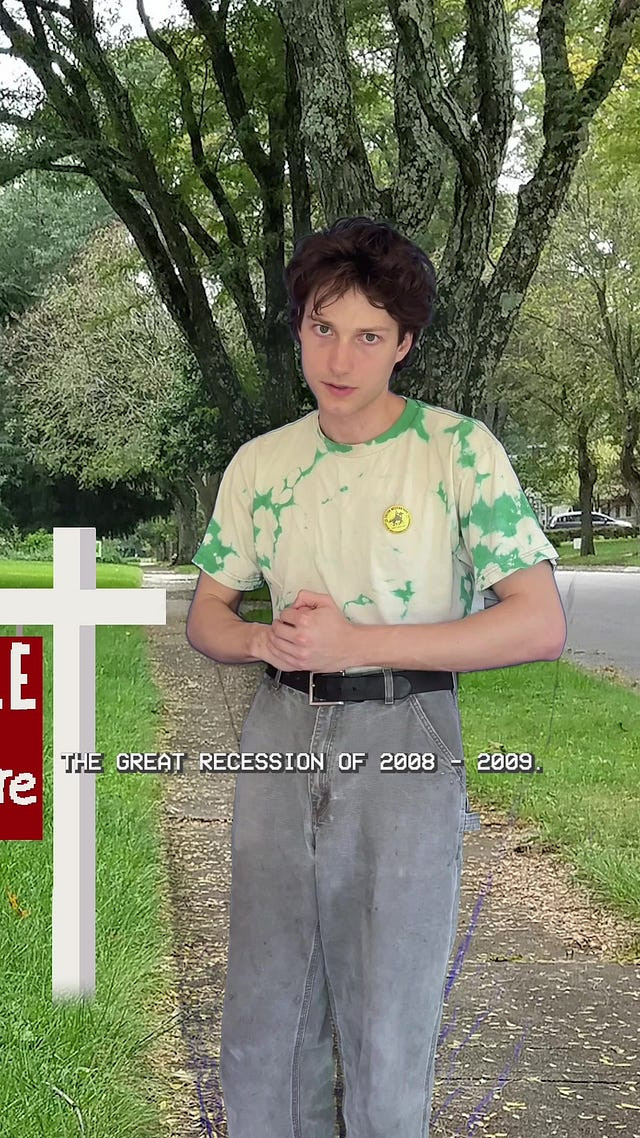Let’s address some crucial realities for brands venturing into the vibrant world of TikTok and Instagram. Firstly, a significant number of brands are unknowingly operating in a legal gray area when incorporating trending songs and sounds into their content on these platforms. Secondly, simply having access to a song within the platform’s library and being technically able to use it doesn’t automatically grant you legal clearance. Thirdly, your brand’s approach to leveraging trending audio will largely depend on the risk tolerance defined by your legal team. It’s important to recognize that while platforms like TikTok and Instagram often encourage participation in trends, they do so knowing that the legalities for brands using these sounds are often unclear. Alarmingly, some brands are already facing lawsuits for unauthorized use of trending songs or audio, particularly in advertisements and boosted posts. And finally, the most compelling, yet challenging truth: content featuring trending audio frequently achieves superior performance compared to content without it.
It feels important to voice these often-unspoken concerns upfront.
This article will explore key considerations for brands navigating short-form video content and the use of trending audio. It’s vital to preface this by stating that I am not a legal professional, and this content should not be considered legal advice. With that disclaimer in place, let’s delve into the complexities.
Defining Your Brand’s Risk Threshold with Trending TikTok Songs
It’s common to see social media professionals questioning how certain brands are utilizing specific songs on TikTok. The consistent answer often points to a lenient legal department or a lack of awareness regarding the intricacies of music licensing. Given that a transparent approach to your trending audio strategy is advisable (especially considering the “Music Usage Confirmation” agreement you implicitly accept with each post), initiating a discussion with your manager, CEO, or legal department is crucial. Establish a clear understanding of your brand’s acceptable risk level. Present a balanced view of both the potential advantages and disadvantages associated with using these trending sounds.
[Kassie Epstein 🏟 @kassieepstein
I am a: ⚪️ man ⚪️ woman 🔘 social media manager looking for: ⚪️ money ⚪️ fame 🔘 whatever approvals empire state building has to be able to post the music they use](https://twitter.com/kassieepstein/status/1620228557074214912)
A social media manager, who preferred to remain anonymous, shared insights into their brand’s legal involvement: “From 2021-2022, we operated without securing explicit permission for any of the sounds we used. It was our legal team who ultimately clarified that we lacked the necessary rights to the audio we were incorporating.”
Another social media manager highlighted a strategy of using “original audio”—popular spoken-word sounds like “you’re coming home with me” or “nobody’s gonna know”—while deliberately avoiding audio that sampled or remixed popular songs from established artists. The rationale being that legal action from a viral audio creator is perceived as less likely compared to that from a music studio or prominent artist.
Current reports indicate that lawsuits have primarily targeted brands using popular music or sounds specifically within advertisements or boosted content. Outside of these instances, consequences have largely been limited to audio removal or cease and desist notices.
Ultimately, the comfort level of your legal team will dictate your brand’s approach to using Trending Tiktok Songs and sounds.
Proactively Seeking Permission for Trending TikTok Audio
A common misconception is that a risk-averse legal stance on trending audio leaves brands creatively stifled. This isn’t entirely accurate. When dealing with popular “original audio” where the source is clearly identifiable, direct outreach for permission is a viable option. The previously anonymous social media manager explained, “With increasing legal scrutiny around sound rights, we now prioritize obtaining permission from the original creator. Our process mirrors that of securing UGC rights: we comment on the original video, explicitly requesting permission, and require an affirmative response from the creator before usage.”
If a particular trending sound aligns perfectly with your brand’s content strategy, proactively seeking permission can be a valuable approach to legally utilizing trending TikTok songs.
[Bari Rosenstein @basicallybari
video on left uses a trending audio (that we got permission to use) and video on right uses audio from commercial library I wish Tik Tok views didn’t depend on trending audio so heavily, especially as brands are getting more pull back on using audio they don’t have the rights to
 Image](https://twitter.com/basicallybari/status/1617533961038618632)
Image](https://twitter.com/basicallybari/status/1617533961038618632)
Debunking the “Access Equals Legal Right” Myth on TikTok and Instagram
Having a business profile on Instagram and TikTok grants access to a broad library of “original sounds,” but restricts access to the full spectrum of licensed music, including trending songs from major artists. A prevalent misconception among social media managers is that platform access and the ability to “credit” sounds equates to legal usage permission. This is demonstrably false, especially when considering advertisements or boosted posts. Unless a sound is explicitly royalty-free or owned by your brand, technical access does not translate to legal authorization, particularly for commercial use of trending TikTok songs.
Some brands have even considered avoiding business profile conversion to maintain access to the broader music library—allowing them to use popular songs from artists like Drake or Miley Cyrus. One anonymous social media manager admitted, “We’ve consciously avoided switching to a business account on TikTok specifically to retain access to trending sounds…” This strategy represents a significant legal risk and demands thorough discussion with your legal counsel. Circumventing business account settings to access copyrighted music is a fast track to potential legal action from artists or music studios.
It’s a critical reminder that brand loyalty may not extend to legal protection in copyright infringement scenarios.
[Social Savannah @social_savannah
Why do brands take the risk of using popular songs in their ads? Do they not realize this is highly illegal and very risky? I’m sure Drake is not getting a “cut” of this. I see brands do this all the time, especially on TikTok. I would never take that risk. Why would you? ](https://twitter.com/social_savannah/status/1546583252885839872)
Platform Improvements Needed for Brands and Trending TikTok Sounds
TikTok and Instagram could implement crucial changes to better support brands in navigating the complexities of trending audio and licensed music.
Firstly, platforms should empower creators of viral original audio (those who originate spoken-word trends) to monetize their creations. Simultaneously, they should facilitate a system for brands to directly pay for the right to use this audio. Envision a micro-marketplace within the platforms, enabling creators to be compensated for their viral sounds and providing brands with a legitimate avenue to participate in trends using trending TikTok songs. The interview with Mikhaela Jennings, the creator behind the “the girls that get it, get it” trend, offers valuable context to this discussion, illustrating the potential pipeline from trending sound to broader recognition.
Secondly, a significant upgrade to the “Commercial Sounds” library is overdue. The current selection often feels repetitive and uninspired. Platforms should invest in commissioning royalty-free original sounds tailored for brand use. Collaborating with creators to bring trending audios into this commercial library, and even partnering with brands to initiate trends around commercial sounds, are all viable solutions.
Currently, the platforms maintain an ambiguous stance on the legality of brand usage of trending audio, largely because these sounds demonstrably drive engagement, and a robust, brand-friendly solution is lacking. These proposed improvements would significantly benefit brands and encourage continued investment in short-form video marketing.
The Shift Towards Trend-Agnostic Content Strategies
The lawsuits targeting brands for using trending songs in advertisements may just be the beginning. It’s conceivable that brands using trending audio in organic social content will also face increasing scrutiny. For brands managing TikTok or Reels strategies, shifting towards a content approach that is less reliant on trends is a prudent long-term strategy.
Inspiration can be drawn from accounts that successfully operate without relying on trending audio, such as Planet Money, Chipotle, and Spikeball. Creators like @richcaroline, @bomanizer, and @lyssielooloo also demonstrate how to create engaging content independent of specific trending sounds.
Alt text: Planet Money TikTok video thumbnail showing text overlay “The wealthiest 10% of Americans own 69% of the wealth” against a blurred background of people in public.
From a strategic perspective, moving away from trend-dependent content allows brands to cultivate a more distinctive voice online. While leveraging trending content can offer rapid growth, building a unique and memorable online presence for your brand in the long run requires differentiation. This distinctiveness is unlikely to be achieved by echoing the same trending TikTok songs and sounds used by countless other brands.
Alt text: Job board advertisement graphic listing logos for Pop Up Grocer, Parade, Crooked Media, and LACMA, promoting social media job openings.
Explore current job openings at Pop Up Grocer, Parade, Crooked Media, LACMA, and more!
Visit the job board here to discover opportunities. For companies seeking to post on the board and access a talent pool of over 200 skilled social media professionals, further information is available here.


